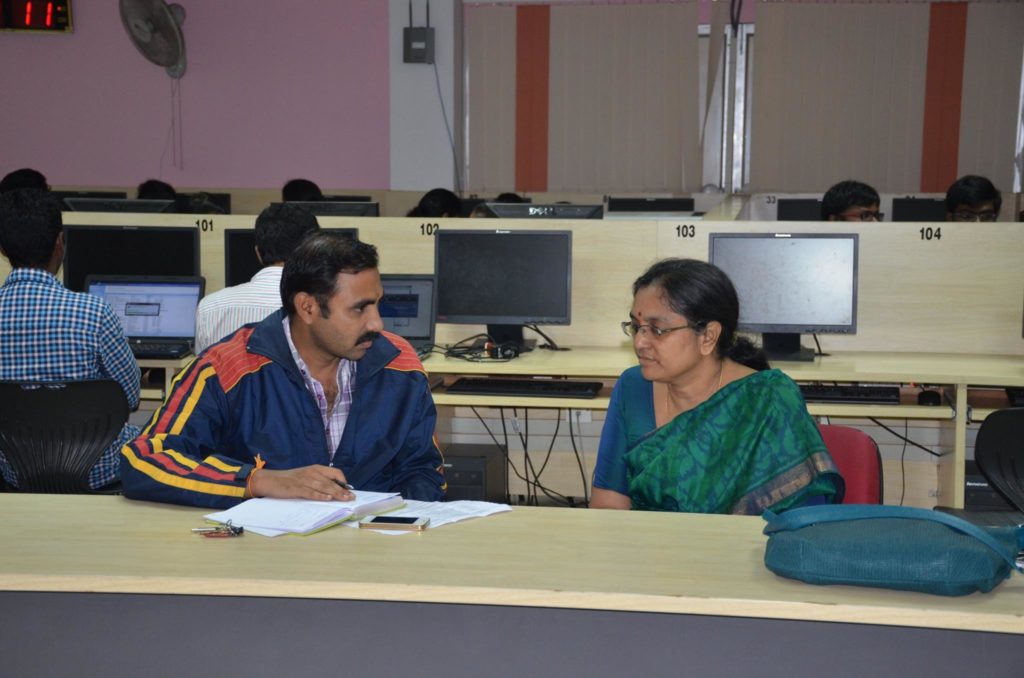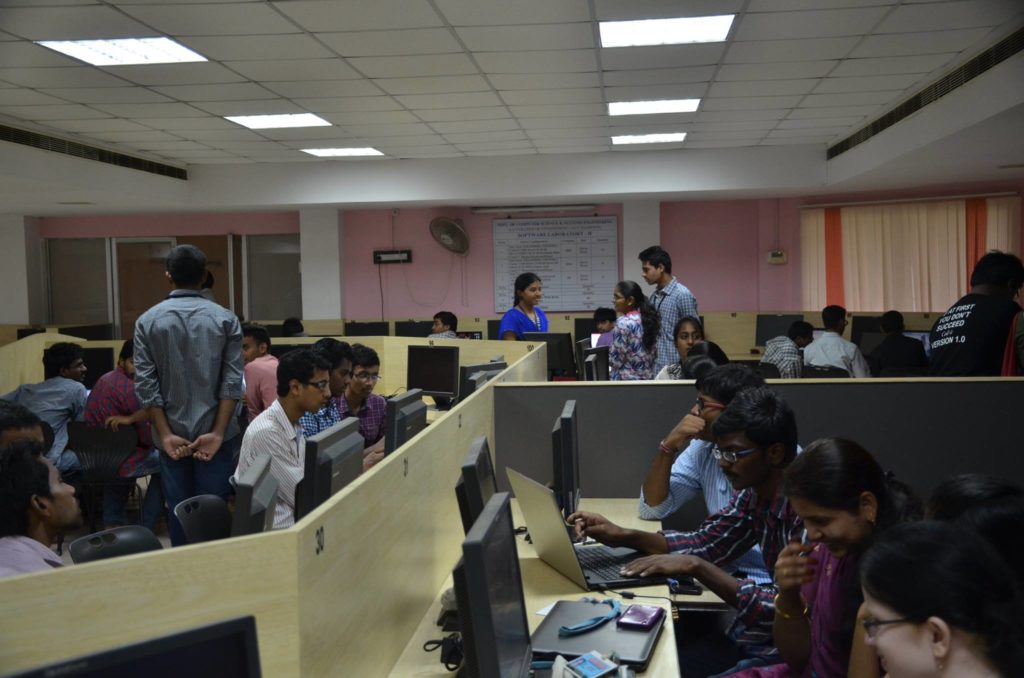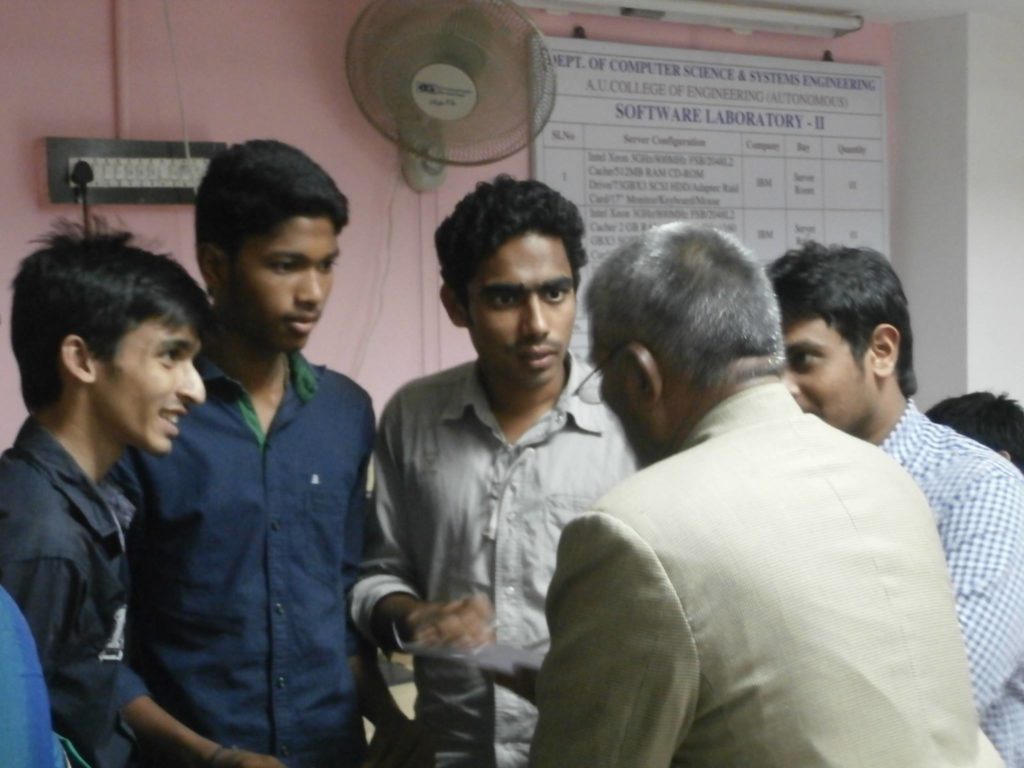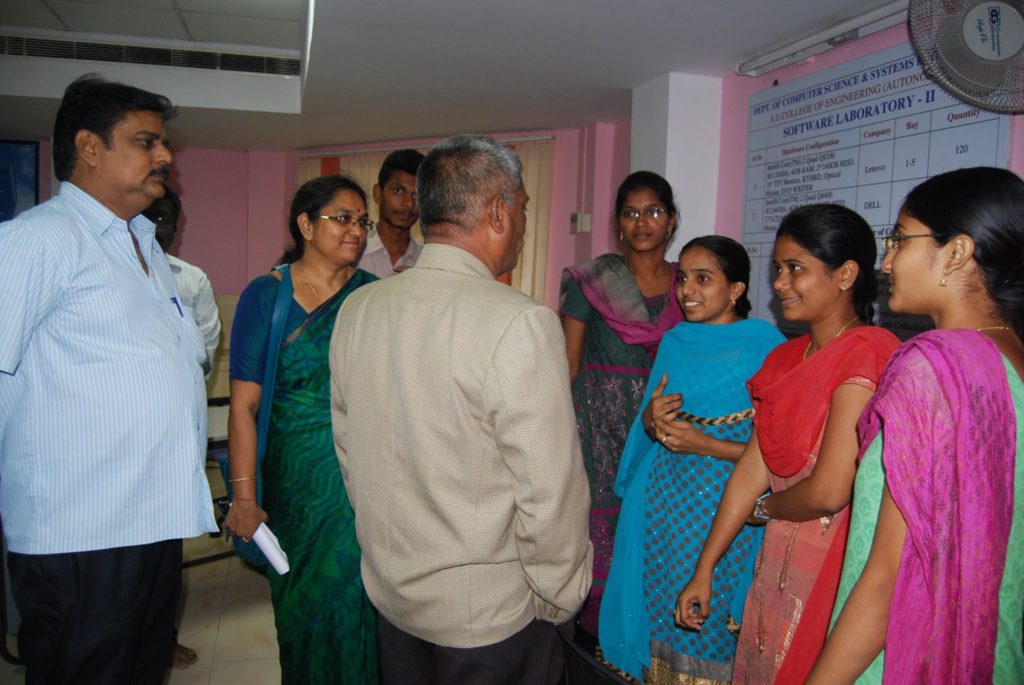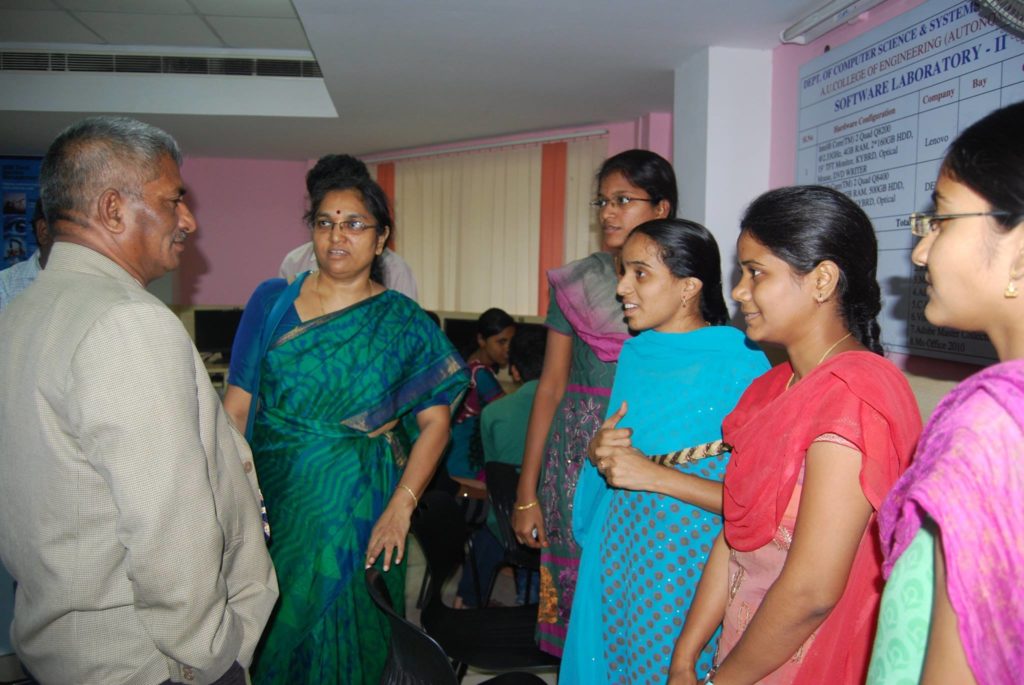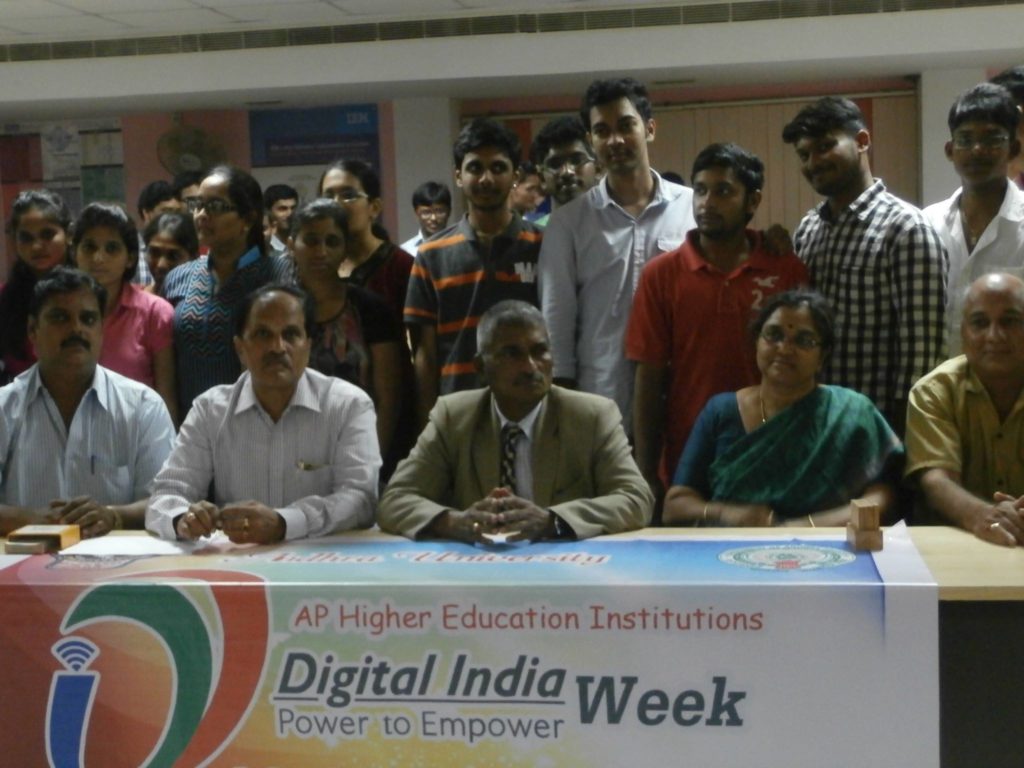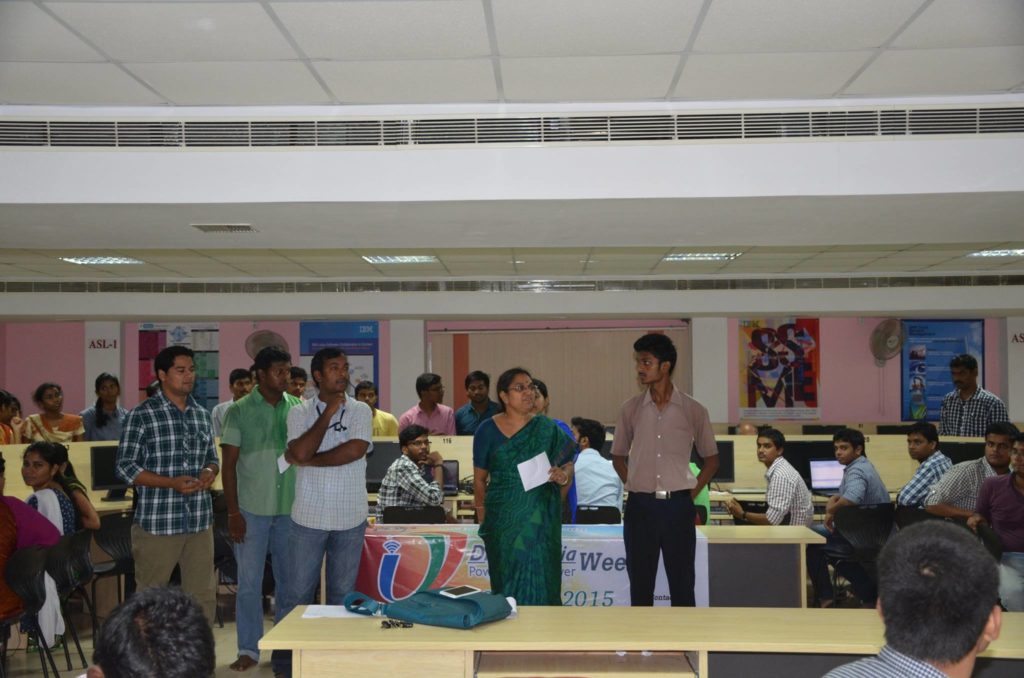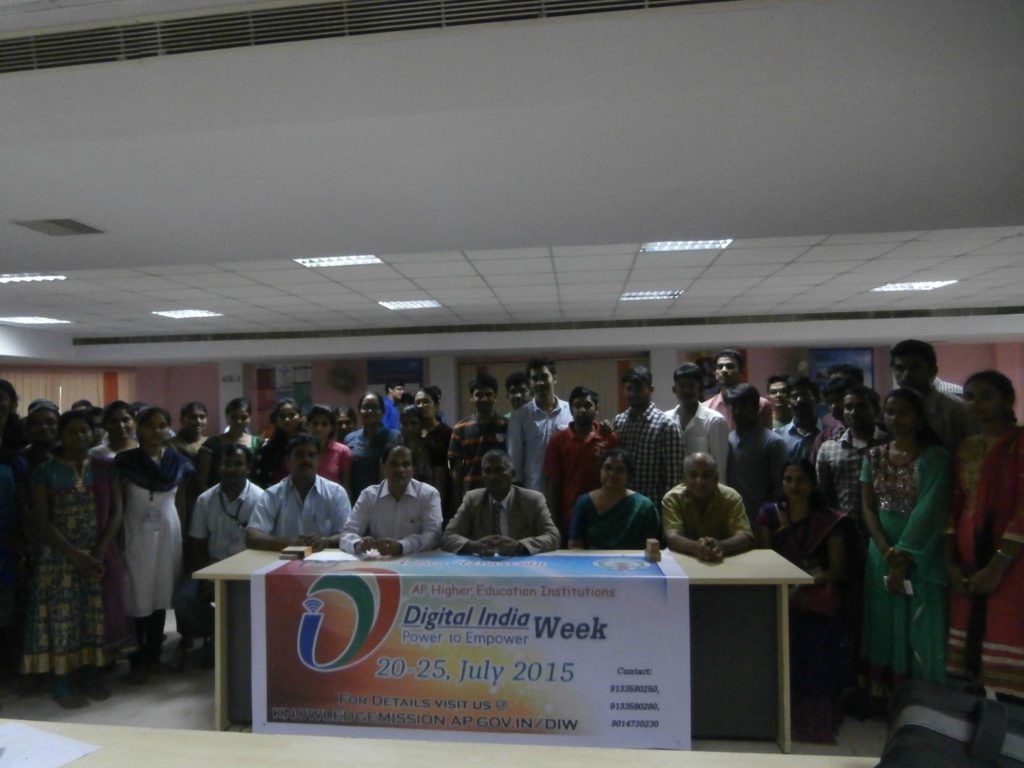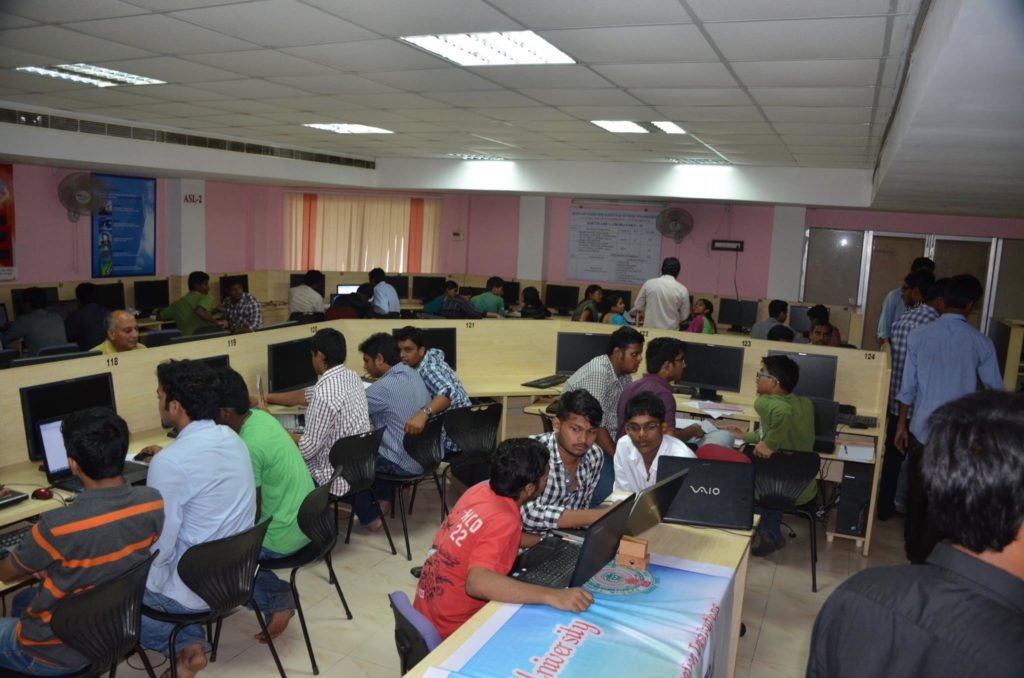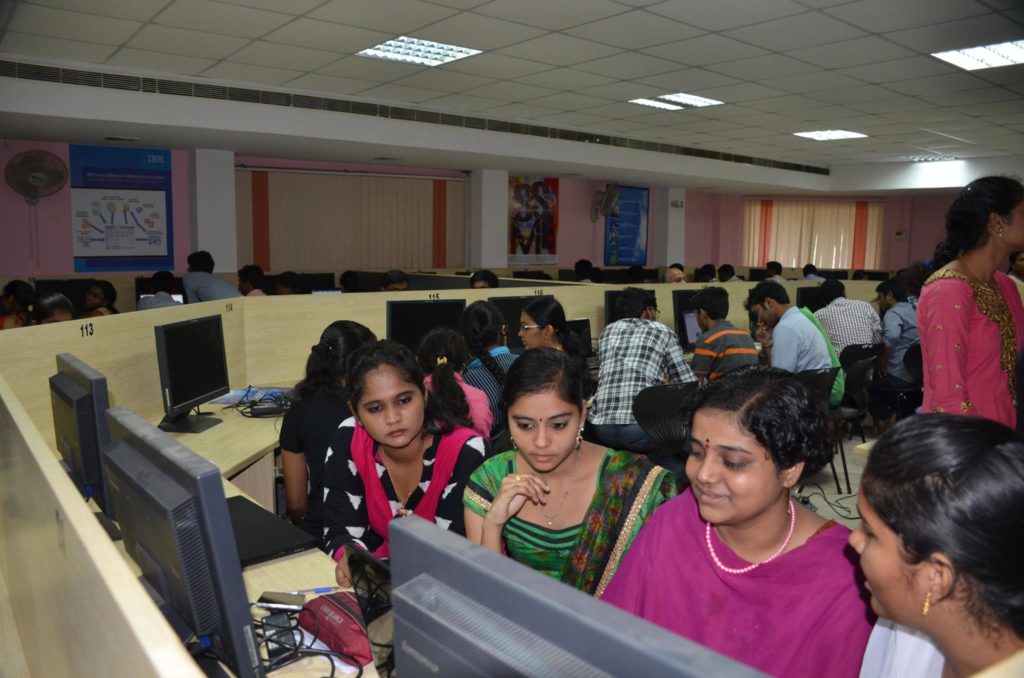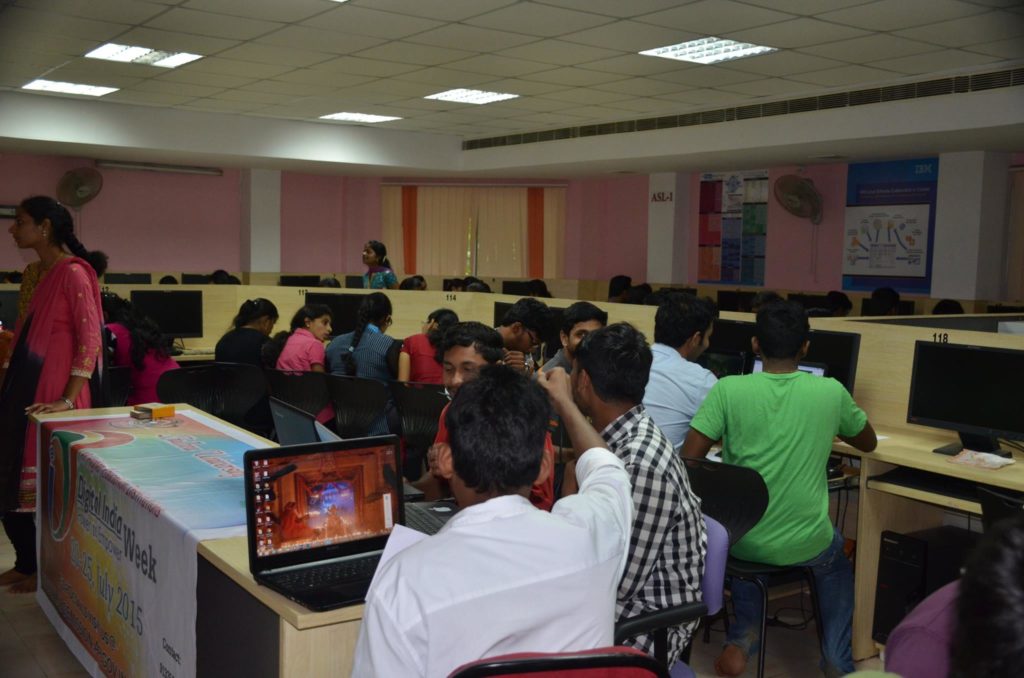CSIR-IICT initiative BEST is a boon for the future entrepreneurs and inventors.
Happy to be part of the launch in YVS Murthy Auditorium, Andhra University, Visakhapatnam.
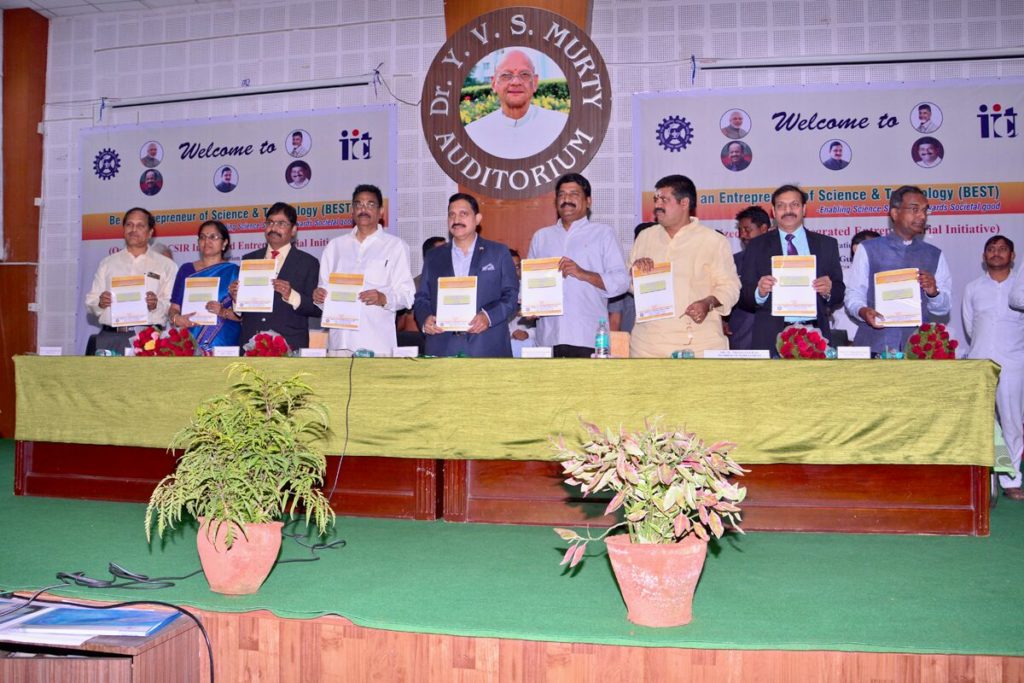
More information at : http://www.iictindia.org/best
News Coverage is here:
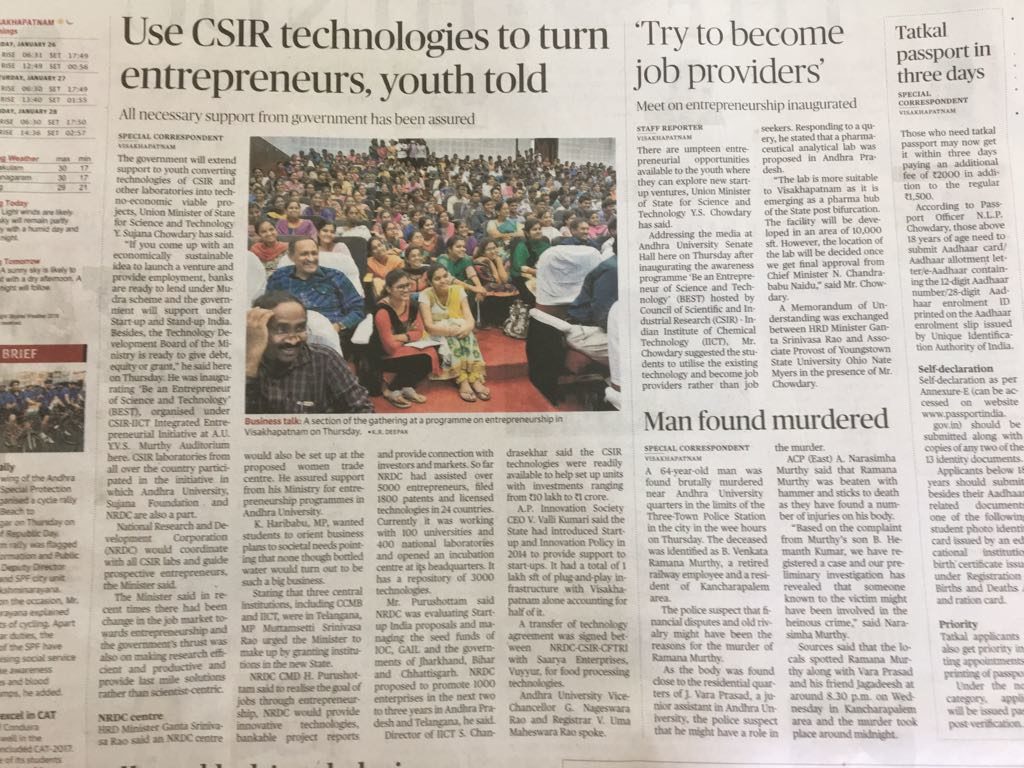
CSIR-IICT initiative BEST is a boon for the future entrepreneurs and inventors.
Happy to be part of the launch in YVS Murthy Auditorium, Andhra University, Visakhapatnam.

More information at : http://www.iictindia.org/best
News Coverage is here:

Great Work!
Ms Lakshmi Durga Chava says “sustainable solutions emerge when the people themselves develop them and manage them. That is why community managed models have a higher chance of succeeding”. She adds further “ It is neither the public not the private sector can deliver the services to the last mile. Rather, it is the poor people themselves who if trained and empowered are the best able to do so”.nity managed models have a higher chance of succeeding”. She adds further “ It is neither the public not the private sector can deliver the services to the last mile. Rather, it is the poor people themselves who if trained and empowered are the best able to do so”.
Happy to have met a passionate worker.
For further information: Community run centres-world bank report
The total bandwidth for AU through NKN is 1Gbps
Redundant link is through BSNL for 200Mbps (BSNL) with a backbone support of 1Tbps
Average bandwidth consumed in campus is 600Mbps.
5800 systems are using internet facility with average bandwidth of 300Mbps.
8270 students are registered for Wi-Fi access in departments and hostels with speed of 54Mbps each, using advanced network infrastructure.
For authentication we use security like MAC filtering, username and password.
Student application forms are kept in website http://cc.auvsp.edu.in/aucc/application.jsp
Advanced Network Infrastructure followed by http://cc.auvsp.edu.in/aucc/home.jsp
QS University Rankings: BRICS is an annual ranking of the top universities in the five BRICS countries – Brazil, Russia, India, China and South Africa. Andhra University is ranked in 151-200 slab in QS BRICS and 301-350 in QS ASIA
The eight indicators used are :
Academic reputation (30%)
This is based on analysis of QS’s major global survey of academics, who are asked to identify the top-performing universities in their own field of expertise.
Employer reputation (20%)
This is based on QS’s major global survey of graduate employers, who are asked to identify the universities they perceive as producing the best graduates.
Faculty/student ratio (20%)
This reflects the number of students enrolled per full-time academic faculty member employed. The aim is to give an indication of commitment to teaching and student support.
Staff with a PhD (10%)
Based on the proportion of academic staff members with a PhD, this indicator aims to assess how successful universities have been in recruiting highly qualified faculty members – a major priority for many institutions in the BRICS countries.
Papers per faculty (10%)
Calculated using data from Scopus, this indicator assesses research productivity, based on the number of research papers published per academic staff member.
Citations per paper (5%)
Again calculated using the Scopus database, this indicator aims to assess research impact, based on the frequency with which an institution’s research is cited by other researchers.
International faculty (2.5%)
This score reflects the percentage of faculty members at the university who are international, to show how successful each institution has been in attracting academics from further afield.
International students (2.5%)
This last indicator reflects the percentage of students enrolled at the university who are international, giving a further indication of each institution’s global appeal.
Gave a talk on ” Wireless Attacks-an overview” for the workshop on Information Security and its Tools on 30th March, 2016

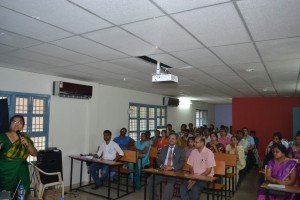
I have covered:
Navigating eduKPI: A workshop sponsored by RUSA was conducted by Andhra University in Platinum Jubilee Hall from 9 AM to 5.30 PM on March 19, 2016
Prof. M. Shameem was the convener and I was the co-convener.
Prof. P Narasimha Rao, Vice Chairman, APSCHE, Sri Srikanthanatha Reddy, Joint Secretary, AP Higher Education graced the proceedings.
Prof Narasimha Rao explained why KPI’s are important and Sri Reddy gave information on RUSA and how higher education is using it for development of higher education.
I gave a talk on World University Rankings- AU case study. Sri Vijay Reddy, Elsevier-Scopus Presented a talk on how Scopus tool can be used and how Scival is useful for research. Sri Akshay Jain, EDB, AP State Government has presented a talk on World University Rankings- Inside Out.
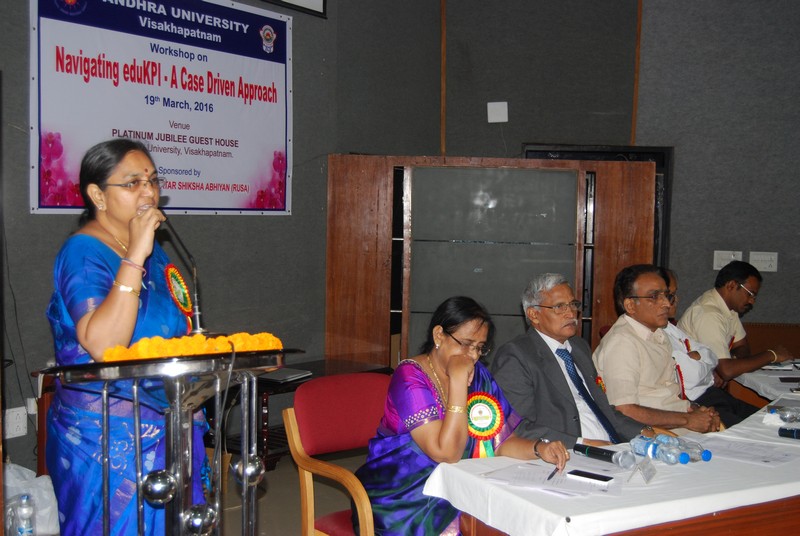
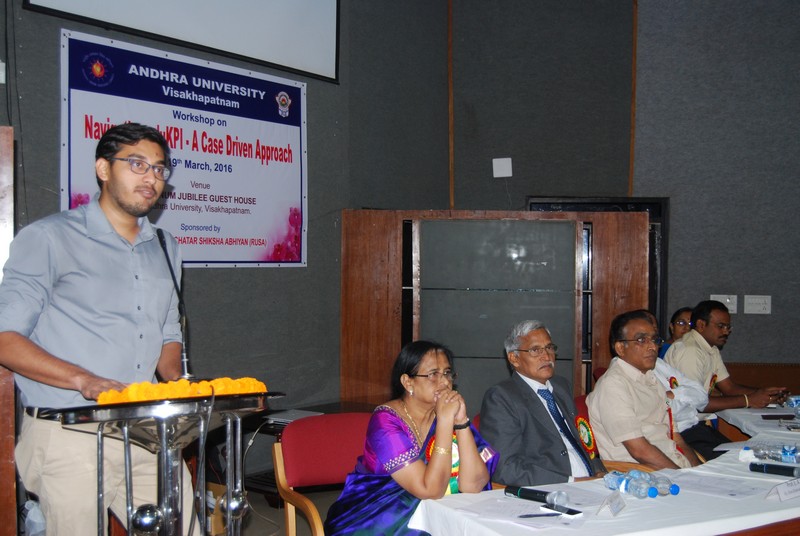
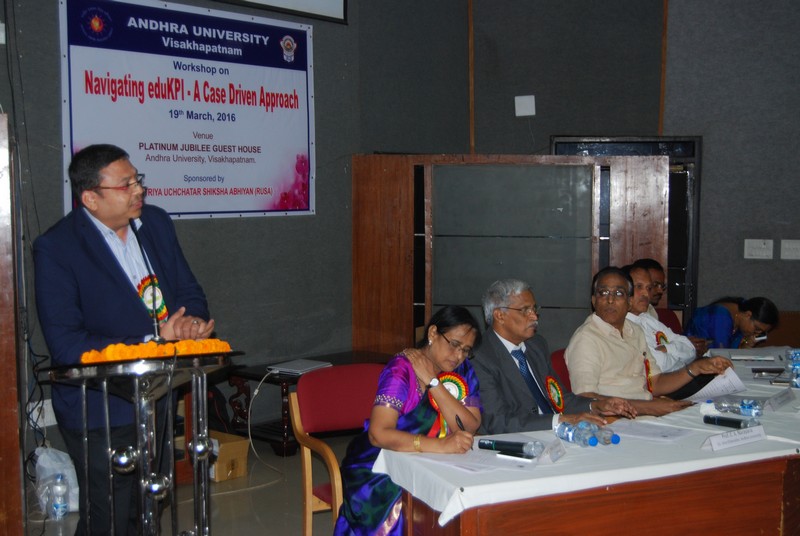
Prof Shameem presented an overview of why the workshop was conducted.
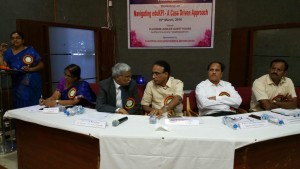
The dais of Navigating eduKPI: from left: Prof V.Valli Kumari, Prof. U. Shameem, Prof. E.A Narayana, Prof P. Narasimha Rao, Prof. V. Umamaheswara Rao, Sri Srikantha Natha Reddy
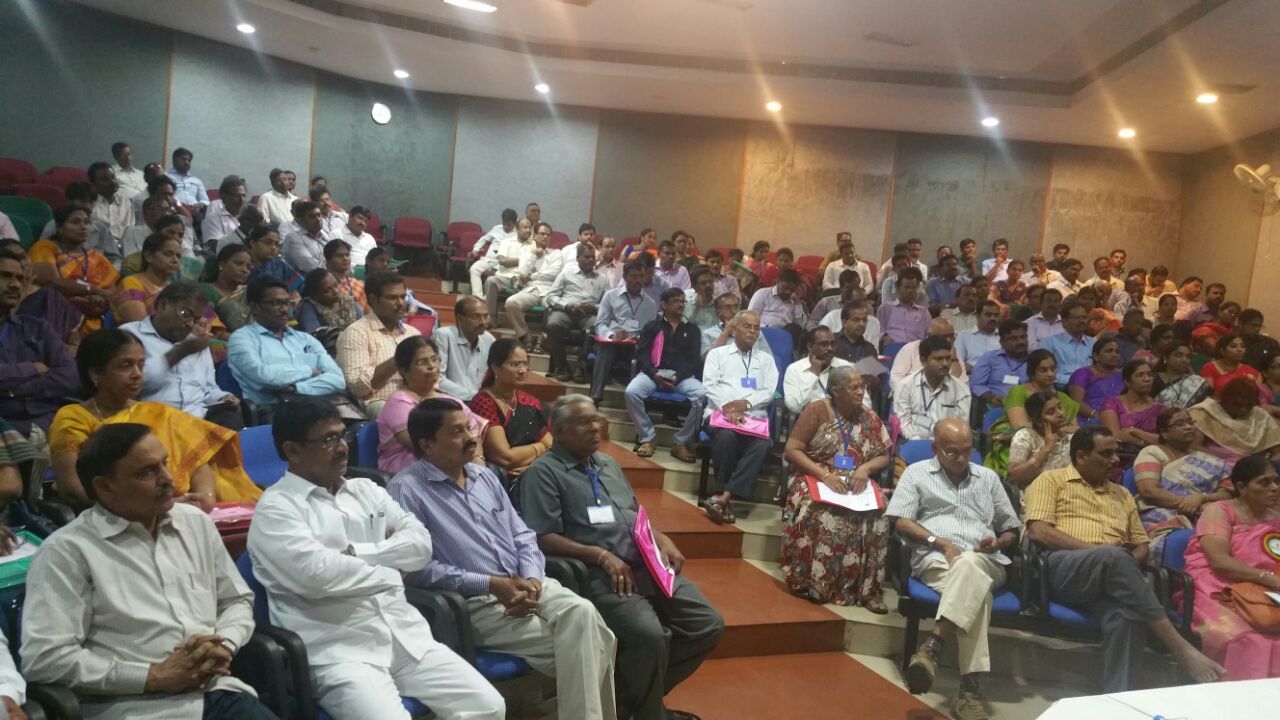
Participants from 9 universities:Andhra University, Sri Venkateswara University, Acharya Nagarjuna University, Yogi Vemana University, Sri Padamavathi mahila University, JNTU Ananthpur, B.R Ambedkar University, Vikam Simhapuri University, Dravidian University
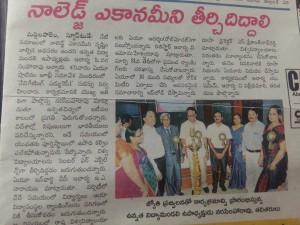
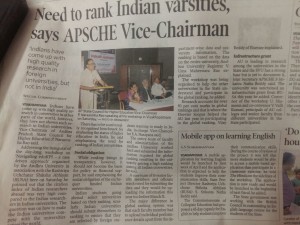
Thanks to all my scholars for volunteering and making this event happen.

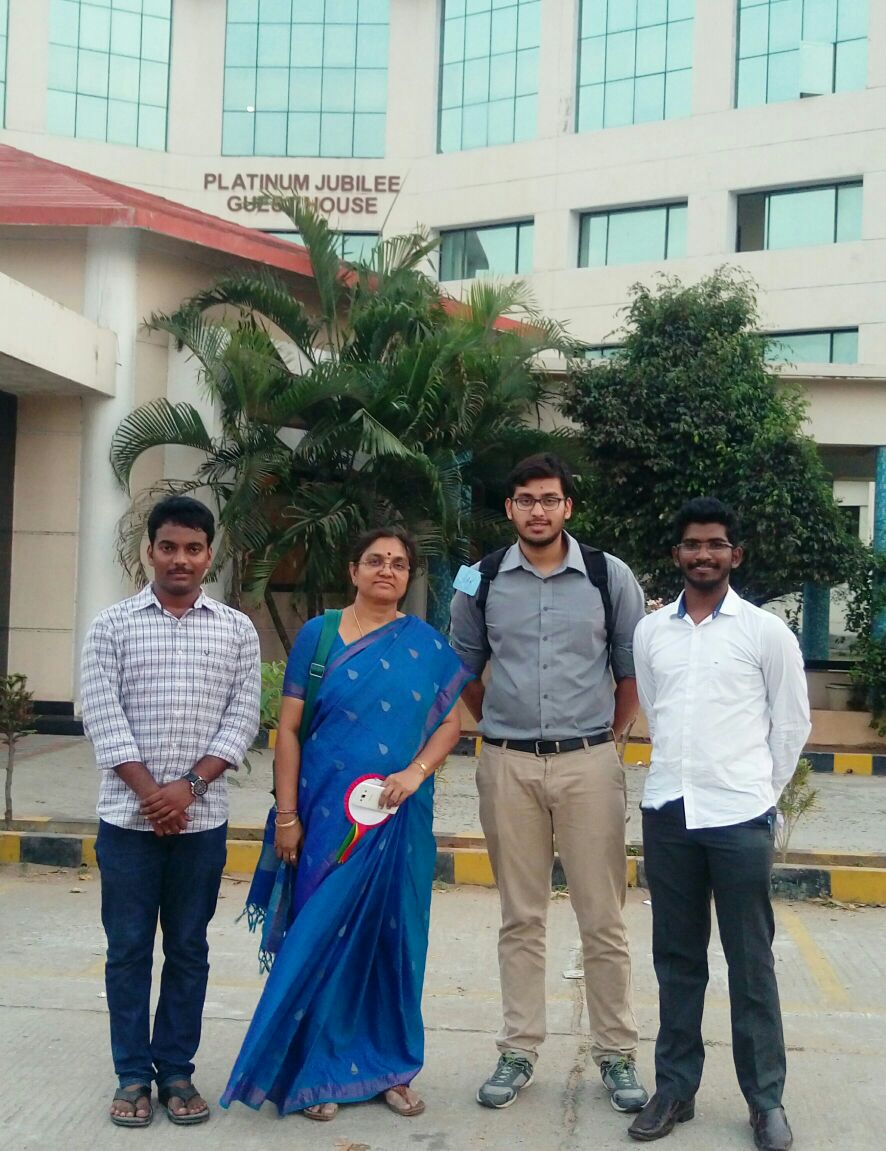

A hackathon was conducted in AU CSSE department first floor lab. Around 23 colleges participated in the event. The participants in number was 178. It was a 36 hour event. The event was organised by startup village.
